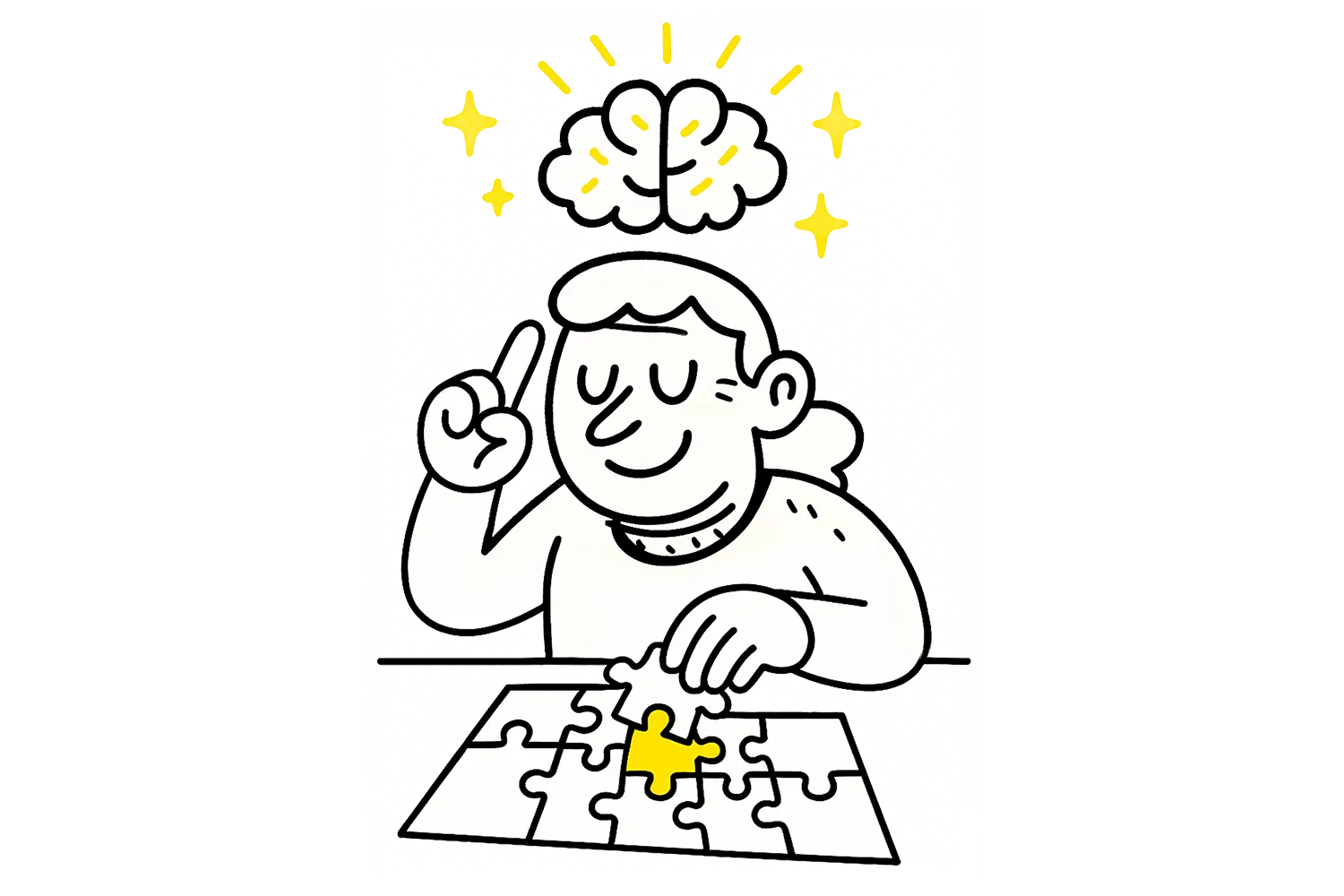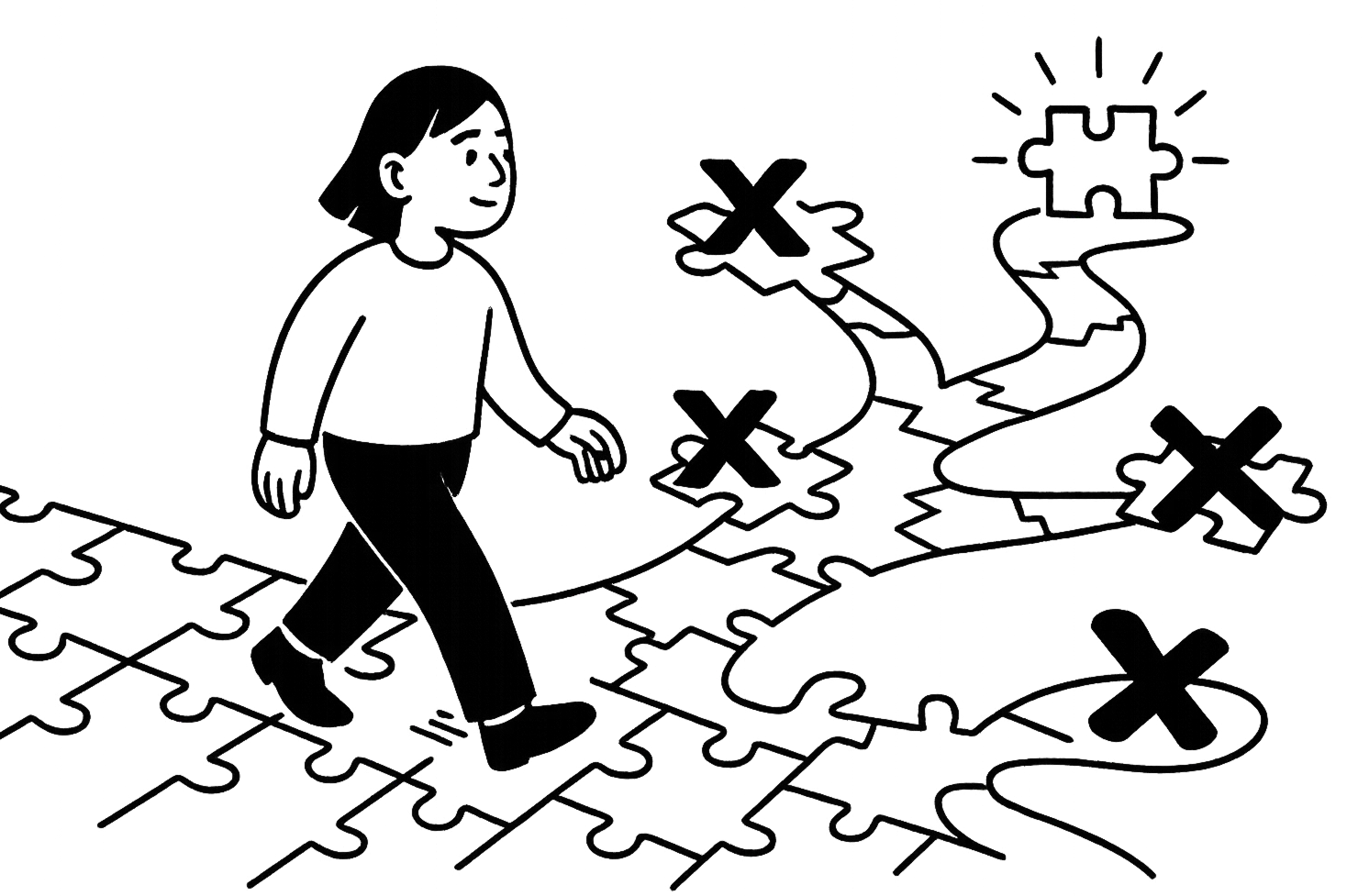You know that incredible feeling when a puzzle suddenly clicks? When you've been stuck for minutes (or let's be honest, much longer), and then—BAM—the solution appears like magic? Turns out, there's some seriously cool brain science behind that "eureka" moment.
Your brain literally lights up
Scientists have actually watched people's brains during puzzle-solving sessions, and the results are wild. In a landmark study by Jung-Beeman and colleagues, researchers used EEG to monitor brain activity while people worked on puzzles. What they found was remarkable: a sudden burst of high-frequency gamma waves in the right side of the brain, happening a third of a second before people even realized they had the solution.
Think about that. Your brain figured it out before "you" did.
This gamma wave burst happened specifically in the right anterior temporal area—a region that specializes in making connections between distantly related concepts. It's like your brain's version of suddenly seeing how two puzzle pieces fit together, even when they seemed completely unrelated.
Why puzzles are "aha!" factories
Not all problems create these lightning-bolt moments. Your brain treats puzzles fundamentally differently than routine, step-by-step problems. When you're adding numbers or following a recipe, you're using analytical, sequential thinking. But puzzles? They demand something called "restructuring."
Restructuring means completely reframing how you see the problem. That moment when you realize the trick isn't about the information you thought was important—it's about seeing the whole thing from a totally different angle. Your brain has to break down its initial assumptions and rebuild them into something new.
This is why puzzles can feel so satisfying. You're not just finding an answer; you're fundamentally changing how you understand the problem itself.
The quiet before the storm
Here's where it gets even more interesting. Before that gamma wave explosion, researchers found something else: increased alpha waves. Alpha waves are often associated with a relaxed, internally-focused state. It's as if your brain is saying, "Hold on, let me quiet down all this other noise and focus."
This explains why puzzle solutions often come when you're not actively trying to force them. Your conscious mind steps back, distracting thoughts fade away, and your unconscious mind gets to work making those distant connections. Ever notice how solutions pop up in the shower, on walks, or right before you fall asleep? That's your alpha waves doing their thing.
Why this matters for your puzzle habit
Understanding the neuroscience behind "aha!" moments reveals why puzzles are so much more than just entertainment. Every time you experience that flash of insight, you're:
Building stronger memories. Research shows that solutions discovered through insight are remembered better than those reached through analysis. That "aha!" moment literally helps encode the solution more deeply in your brain.
Training your creative thinking. Each restructuring experience strengthens your ability to see problems from new angles. You're building mental flexibility that extends far beyond puzzles.
Getting a natural dopamine hit. That rush of satisfaction isn't just psychological—it's your brain's reward system reinforcing the behavior that led to the breakthrough.
The next time you're stuck on a puzzle, remember what's happening upstairs. Your brain is already working on connections you can't consciously see yet. Sometimes the best thing you can do is step back, let those alpha waves quiet the noise, and trust that the gamma wave burst is coming.
After all, your brain figured it out before you even knew there was something to figure out.


.png)





.webp)
